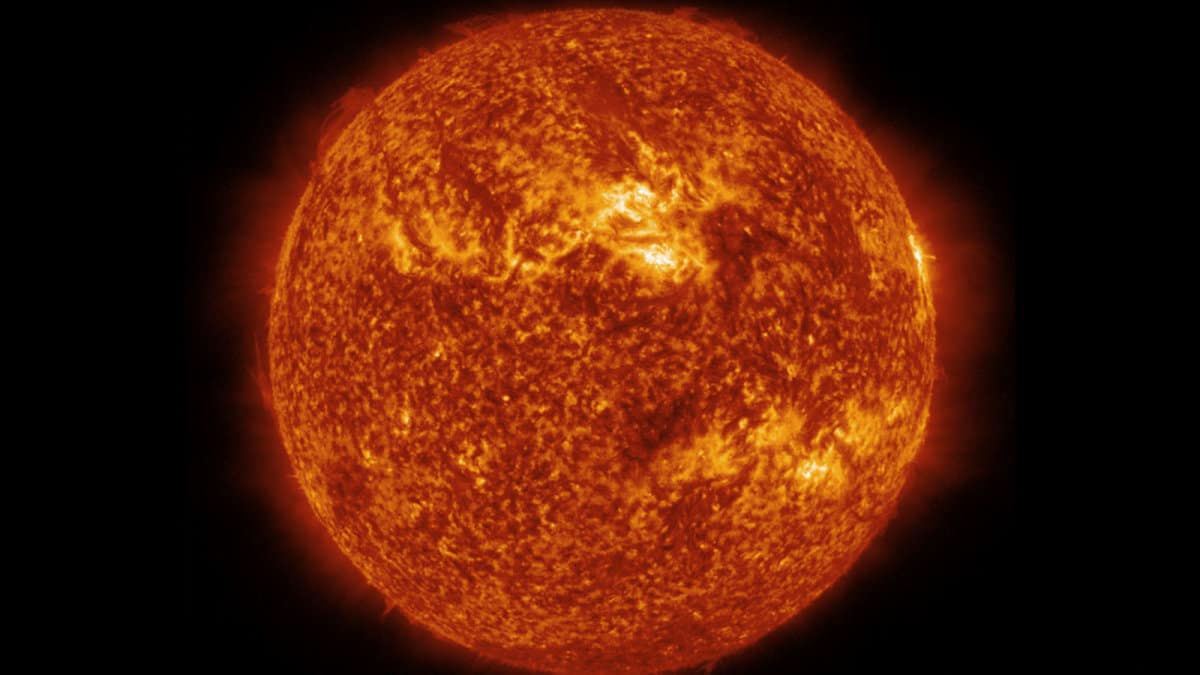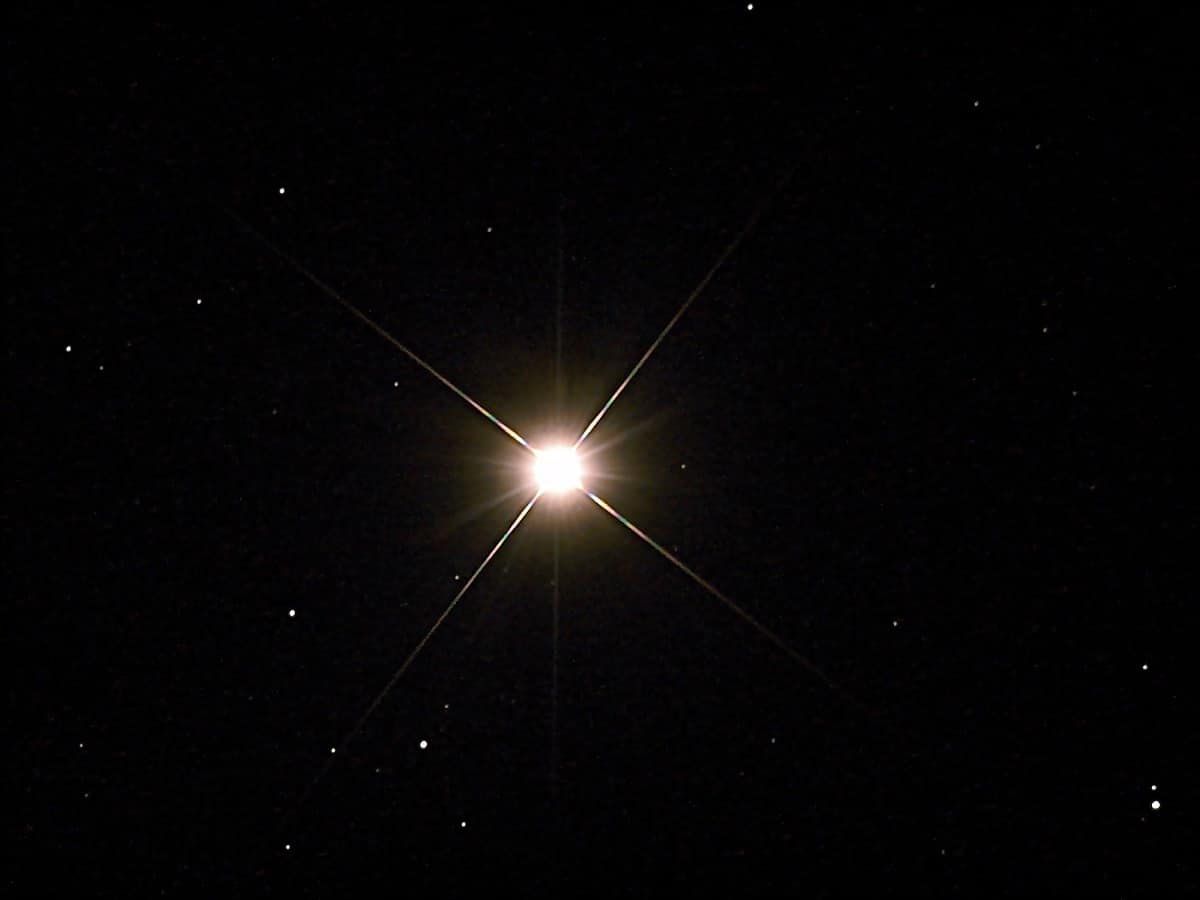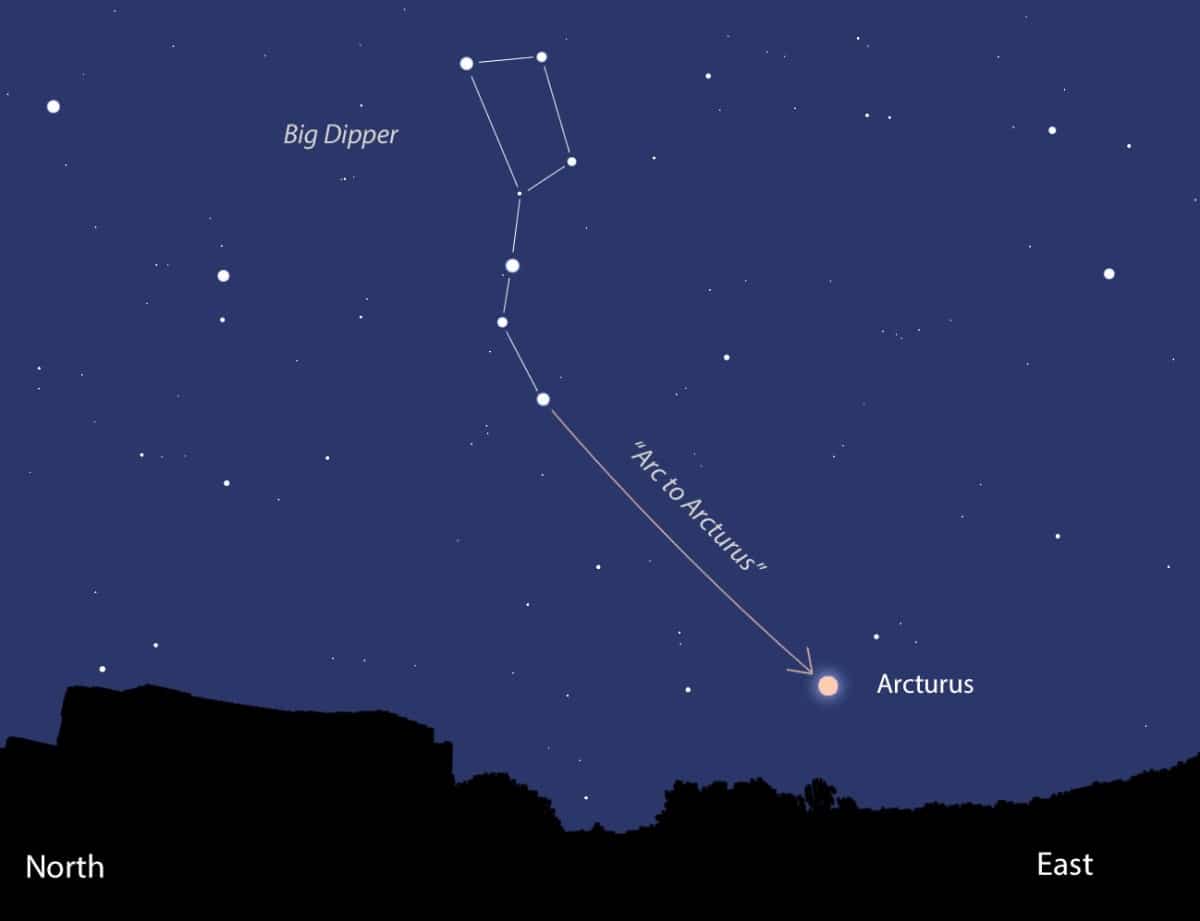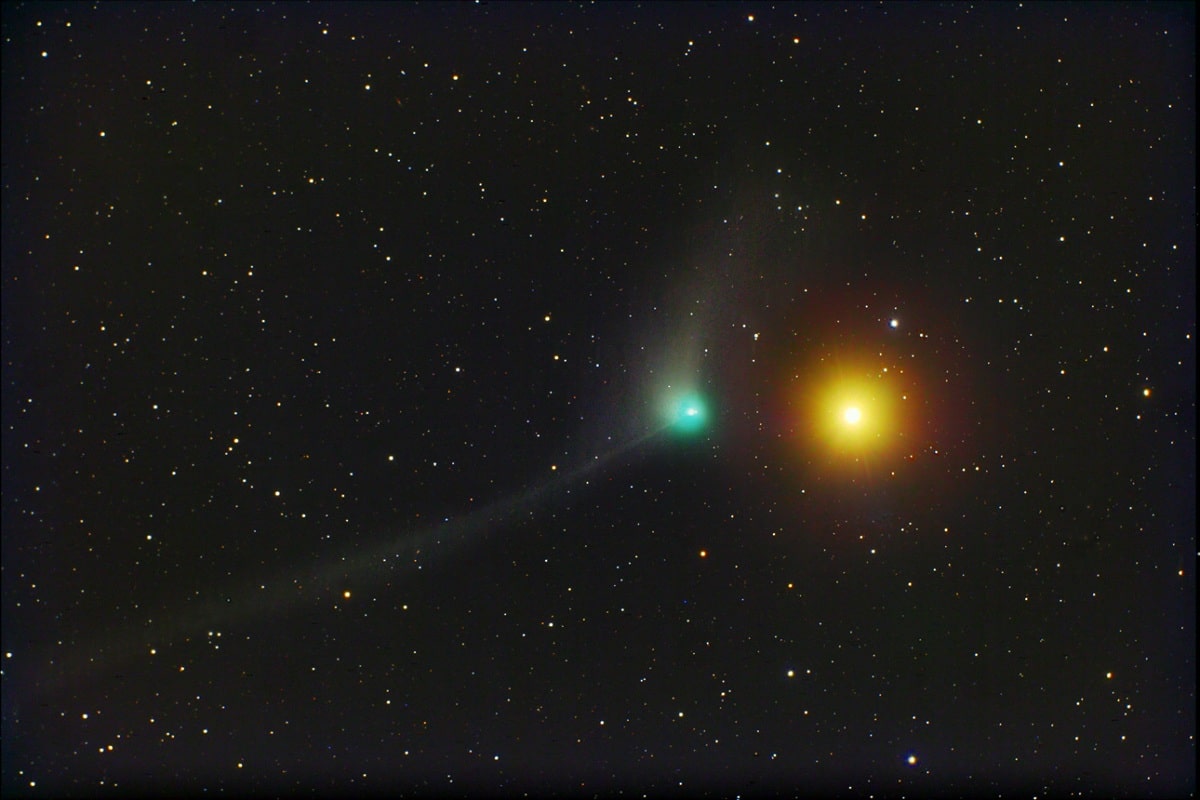
On spring and early summer nights, any observer in Earth's northern hemisphere will notice a bright star in the sky, high up: a prominent orange, often mistaken for Mars. Is Arcturus, the brightest star in the constellation Bootes. It is known to be the brightest star in the entire celestial north.
Therefore, we are going to dedicate this article to tell you everything you need to know about Arcturus, its characteristics and curiosities.
Arcturus, the brightest star in the entire celestial north

They estimate that Arcturus is a giant star that warns of what will happen to the sun in about 5 billion years. The enormous size of the Arcturus is the result of the star's internal rotation, which is the result of its advanced age. 90% of the stars we see in the sky only need to worry about doing one thing: convert hydrogen into helium. When stars do this, astronomers say they are in the "main sequence zone." The sun does just that. Although the temperature of the sun's surface is less than 6.000 degrees Celsius (or 5.770 Kelvin to be precise), its core temperature reaches 40 million degrees, which is due to the nuclear fusion reaction. The nucleus grows little by little, accumulating helium in it.
If we wait 5 billion years, the inner region of the sun, the hottest region, will grow large enough to expand the outer layer like a hot air balloon. The hot air or gas will occupy a larger volume and the sun will turn into a red giant star. Considering its mass, Arcturus occupies a huge volume. Its density is less than 0,0005 the density of the sun.
The color change of an expanding star is due to the fact that the nucleus is now forced to heat a larger surface area, which is like a comet trying to heat a hundred times with the same burner. Therefore, the surface temperature decreases and the stars turn red. Red light corresponds to a decrease in surface temperature of approximately 4000 Kelvin or less. More precisely, the surface temperature of Arcturus is 4.290 degrees Kelvin. The spectrum of Arcturus is different from the Sun, but very similar to the spectrum of a sunspot. Sunspots are "cold" regions of the Sun, so this confirms that Arcturus is a relatively cool star.
Arcturus features

When a star is expanding very fast, the pressure of squeezing the core will give a little, and then the center of the star will temporarily "close". However, the light from Arcturus was brighter than expected. Some people bet this means that the nucleus is now also "reactivated" by fusing helium into carbon. Well, with this precedent, we already know why Arcturus is so bloated: the heat over-inflates it. Arcturus is almost 30 times that of the sun and, strangely, its mass is almost the same as Astro Rey. Others estimate that their quality has only increased by 50%.
In theory, a star that produces carbon from helium in a nuclear fusion reaction will hardly exhibit magnetic activity like the sun, but Arcturus will emit soft X-rays, indicating that it has a subtle crown driven by magnetism.
An alien star

Arcturus belongs to the halo of the Milky Way. The stars in the halo do not move in the plane of the Milky Way like the sun, but their orbits are in a highly inclined plane with chaotic trajectories. This may explain its rapid movement in the sky. The sun follows the rotation of the Milky Way, while Arcturus does not. Someone pointed out that Arcturus may have come from another galaxy and collide with the Milky Way more than 5 billion years ago. At least 52 other stars appear to be in Arcturus-like orbits. They are known as the "Arcturus group."
Every day, Arcturus is getting closer to our solar system, but it's not getting any closer. It is currently approaching about 5 kilometers per second. Half a million years ago, it was a sixth magnitude star that was almost invisible, now it is moving towards Virgo at a speed of more than 120 kilometers per second.
Bootes, El Boyero, is an easy-to-find northern constellation, guided by the brightest star in the constellation Ursa Major. Most everyone can recognize the skillet shape drawn between the Big Dipper's spine and tail. The handle of this pan points in the direction of Arcturus. It is the brightest star in that direction. Some "new age" fanatics believe that there are Arcturians, a technologically advanced alien race. However, if there were a planetary system orbiting this star, it would have been discovered long ago.
Some history
Arcturus heats the earth like a candle flame at a distance of 8 kilometers. But let's not forget that it is almost 40 light years from us. If we replace the sun with Arcturus, our eyes will see it 113 times brighter and our skin will heat up quickly. If it is done with infrared radiation we see that it is 215 times brighter than the sun. Comparing its total luminosity with its apparent luminosity (magnitude), it is estimated that it is 37 light years from Earth. If the surface temperature is related to the amount of global radiation it generates, it is estimated that the diameter must be 36 million kilometers, which is 26 times larger than the Sun.
Arcturus is the first star to be located during the day with the help of a telescope. The successful astronomer was Jean-Baptiste Morin, who used a small refracting telescope in 1635. We can repeat the experiment very carefully, avoiding at all costs to point the telescope close to the sun. The specified date to attempt this operation is October.
When it comes to the background stars, the motion of Arcturus is remarkable - an arc of 2,29 inches per year. Among the brightest stars only Alpha Centauri moves faster. The first to notice the motion of Arcturus was Edmond Halley in 1718. There are two things that cause a star to exhibit significant self-motion: its true high speed relative to its surroundings and its proximity to our solar system. Arcturus meets both of these conditions.
I hope that with this information you can learn more about Arcturus and its characteristics.